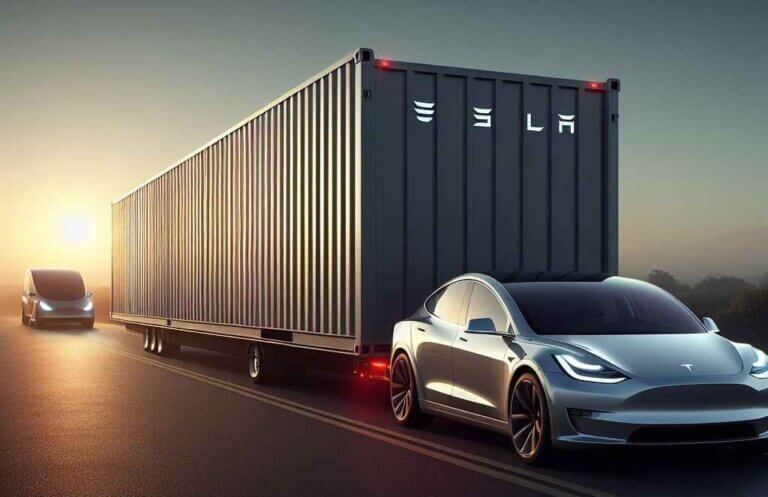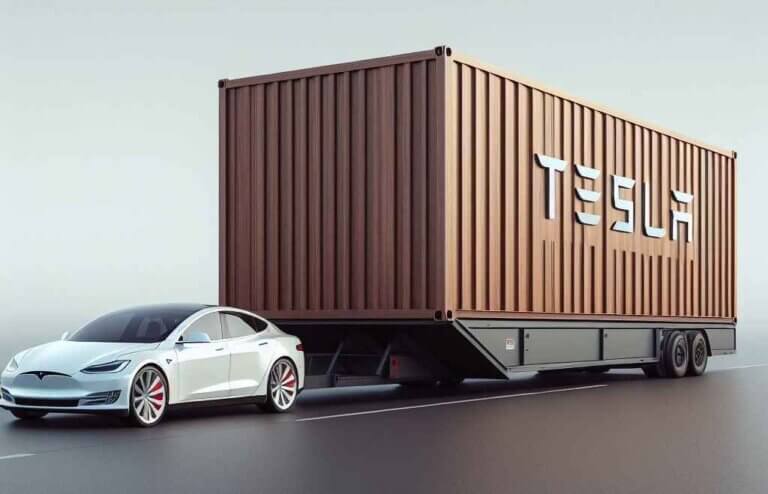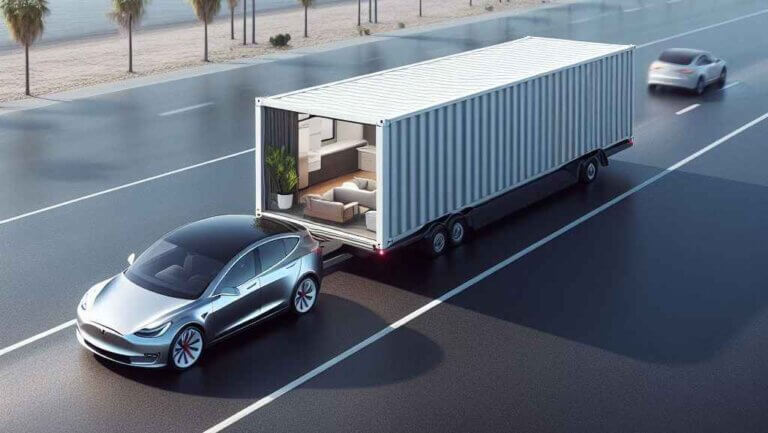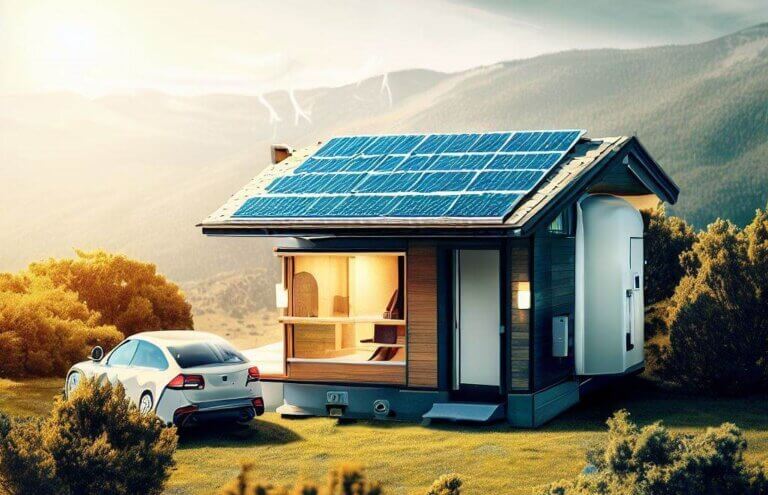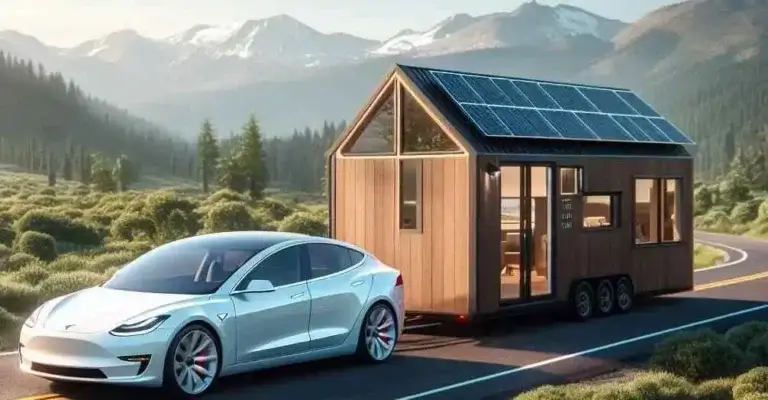Troubleshooting When Your Tesla Solar Panels Not Working
Have you recently had issues with your Tesla solar panels not working properly or producing power? Don’t panic – many solar panel problems can often be resolved with some basic troubleshooting. In this comprehensive guide, we’ll walk you through the most common Tesla solar panel problems, explain how to troubleshoot issues, provide solutions and tips, review safety information for first responders, and answer frequently asked questions about what to do when your Tesla solar panels stop working.
Table of Contents
Introduction to Troubleshooting Tesla Solar Panels
Investing in a solar panel system for your home is a smart long-term choice to reduce energy bills and your environmental impact. Tesla’s high-quality solar panels are designed to produce clean, renewable energy from the sun for decades when properly installed and maintained. However, even reliable solar equipment can experience issues from time to time that interrupt power generation.
When your Tesla solar panels aren’t working correctly, it’s important not to panic. Many common solar problems like inverter failures, network outages, and firmware bugs can often be resolved with basic troubleshooting steps like resetting or power cycling equipment. We’ll walk you through easy things to try yourself before needing to contact Tesla customer support or schedule technician assistance.
With simple troubleshooting, over half of solar panel issues can be fixed in under an hour without costly service calls. This guide will empower you to handle basic solar troubleshooting yourself and get your Tesla system to produce power again quickly. We’ve also included important safety information for emergency personnel if issues arise.
Ready to get your solar panels back online and generate clean energy? Let’s get started!
How to Tell if Your Tesla Solar Panels Not Working Properly
Before diving into troubleshooting, it’s important to identify the symptoms and know what to look for to determine if your solar panel system has stopped functioning normally. Here are a few key signs your Tesla solar panels aren’t working:
- Your Tesla app or web portal shows an alert or error message about your solar panels or other system components. Common alerts relate to equipment faults, loss of wireless connection, or abnormal power production.
- You notice your Powerwall isn’t charging, your household energy usage isn’t offset by solar production, or energy isn’t being exported back to the grid if you have a grid-connected system.
- Visually inspect your solar panels and don’t see the status lights actively blinking during daylight hours. The lights on the Powerwall gateway or solar inverter aren’t illuminated if equipment is offline.
- Check your electricity bills and solar production reports – if solar generation drops abnormally low or to zero unexpectedly, it likely indicates an issue.
- You experience a general power outage in your home during daylight hours despite having an operational Powerwall backup installed.
Don’t ignore alerts or symptoms for long without investigating further. The faster you can troubleshoot problems, the sooner your system will be back online generating electricity and savings!
Preliminary Troubleshooting Your Tesla Solar System

Before arranging for a service technician visit, it’s worth attempting some basic troubleshooting yourself as the issue may be simple to resolve without assistance. Here are practical steps to try getting your solar panels functioning again:
Check for Outages and Service Alerts
Firstly, log into your Tesla account and app to check if any active outage or error notifications have been triggered that relate to your solar and Powerwall system. Official Tesla alerts contain valuable clues about what type of issue occurred.
Outages affecting solar production could originate from problems with your household electrical wiring, utility grid disturbances, internet/WiFi connectivity losses that disrupt equipment monitoring, or faulty solar and storage hardware that needs rebooting or replacement. Understanding the nature of the alert provides direction on troubleshooting.
Inspect Equipment Physical Condition and Connections
Next, visually inspect the physical state of all solar panels, wiring, Powerwall cabinet, and other system components for damage or degradation. Specifically check that cabling connections between solar panels haven’t worked loose.
Solar inverters and gateways can also partially malfunction if ventilation, cooling fans, or air filters are obstructed causing overheating. Check for excessive dust/debris buildup and clearance around the installations.
Reset and Power Cycle Solar System Devices
If no physical damage is visible, try resetting your Powerwall gateway hardware first by switching the circuit breaker connecting it to your household electrical panel off and on. Leave off for one full minute before restoring power.
Most gateway or networking issues can be resolved by restarting the device and allowing time for proper rebooting and reconnecting to Tesla servers.
For solar panel or inverter problems, locate the AC isolation switch installed nearby and flip off/on as well to reboot those components separately.
Finally, reset your home’s internet router and Tesla mobile app, then recheck for restored functionality in your system before additional troubleshooting. Allow 15-30 minutes for equipment to fully come back online after power cycling before assuming the reset attempt failed.
Contact Tesla Support for Remote Diagnostic Checks
If your system remains offline or error messages persist after equipment resets and outlet cycling, it’s time to engage Tesla Energy Support. Call or start an online support ticket for proper troubleshooting diagnostics:
- Tesla Phone Support: 1-877-798-3752
- Tesla Support Pages
Share any alert specifics and troubleshooting steps you’ve already tried. Tesla can pull detailed logs from your system equipment to pinpoint problems and either resolve certain software faults remotely or determine if a technician visit is required for suspected hardware replacement or repairs.
Cooperating promptly with remote diagnostics can get your solar panels and Powerwall functioning again more quickly with lower hassle!
Common Tesla Solar Panel Problems and Solutions
Many solar panel issues that occur have simple solutions once properly diagnosed. Let’s explore the most frequent Tesla solar problems reported by system owners and how each can be addressed via troubleshooting or direct corrective action:
Powerwall Not Charging From Solar Panels
If your solar panels appear to be generating electricity during sun exposure but the Powerwall isn’t storing any excess energy, here’s how to troubleshoot:
- Verify if grid power from your utility is operating normally. No solar charging can occur if the building itself has no functioning electricity.
- Check if the Powerwall is fully 100% charged already. Excess solar production can’t recharge an already full system. Review charging levels and historical rates.
- Inspect cabling between solar panels/inverters and Powerwall for damage or loose wiring interrupted charging current flow.
- Reset gateway and solar inverter by power cycling as covered earlier. This often resolves solar integration and charging issues.
- Contact Tesla Support if rebooting doesn’t restore normal Powerwall charging within half an hour. Further diagnostics needed.
Abnormal Drop or Zero Solar Power Production
Sudden underperformance or complete failure of solar generation often indicates an inverter malfunction or wiring problem like this:
- Check error alerts related to the inverter or solar panel status codes. Diagnostic details can reveal the failure type for troubleshooting.
- Inverter improperly functioning or offline. Attempt an inverter and overall system restart through the power cycling sequence outlined earlier.
- Solar panel wiring came loose or suffered water corrosion damage. Visually inspect all system cabling for faults interrupting energy transmission.
- Partial shading or debris/dirt buildup on panels limits solar absorption. Clean panels fully if safe to access or contact Tesla to evaluate options.
- Severe weather events like storms or lightning strikes can damage vulnerable system components. Tech inspection is needed.
Without obvious cabling faults, generation problems likely require replacement parts only Tesla technicians can safely service according to warranty terms after diagnosing issues remotely first.
Powerwall Beeping and Unresponsive Display
Loud beeping or other audible alerts coming directly from the Powerwall unit or gateway itself typically indicates:
- Hardware overheating risk so built-in fans activate to prevent fire hazards or complete failure during high electrical load conditions.
- Critical low battery charge state while providing backup power requires immediate utility grid power restoration once available to recharge from.
Carefully check the context of the alert noises and don’t ignore. Review any related notifications visible on the physical display or Tesla mobile app simultaneously regarding current operating status.
If no explanatory alerts appear but alarming continues from Powerwall hardware, immediately contact Tesla in case they need to push an emergency firmware update to restore normal function and safety.
Avoid operating the main household breaker directly and let Tesla remotely access the system first before reset attempts in sensitive situations where equipment seems unresponsive or erratic.
Broken Solar Panel Glass or Frame Damage
Extreme weather incidents, falling tree debris, wildlife interference, or lawn care equipment accidents can cause visible exterior harm to solar panels over time.
While surface glass cracks may not immediately impact electrical output, they do weaken the overall structure and weatherproofing increasing long-term failure risks. Plus frames bending or fracturing create additional safety hazards, especially on rooftops.
Carefully inspect damage visually or through security cameras if panels are installed too high to access directly. Look for:
- Cracked or broken outer panel glass.
- Dented aluminum frames or broken panel clamps/brackets.
- Penetration holes in the backing material are visible indicating deeper damage.
Contact Tesla Support with photographic evidence and location specifics of damage as all compromised equipment will require replacement to maintain system integrity, performance, and safety.
Until repairs are complete, consider manually switching related equipment off to avoid electric shock risks, fire dangers from exposed wiring, or components detaching in high winds.
Rodents or Pests Nesting Within Solar Equipment
Unless properly sealed, ground-level installed solar hardware can attract investigative creatures searching for sheltered nesting spots. Squirrels and rats gnawing on wiring leads to costly damage and dangerous electrical hazards through:
- Chewed cabling causing current surges/shorts triggering system disruptions.
- Nesting materials catching fire and burning from excess heat emitted by electronics.
- Waste byproducts like urine corroding connections and parts over time.
Act quickly at the first signs of pest infiltration like nibbled wires, scratches, or small dug holes around hardware. Switch off central equipment until the infestation can be fully removed from the electrical environment by experts.
Both extensive repairs and added preventative sealing/barriers may be required long-term to keep wildlife out of system components. Be vigilant checking for recurring access attempts.
Inverter Failure Alerts
As the critical component responsible for converting solar panel DC into usable AC electricity for your home/Powerwall, inverter operations are continuously monitored. Detected internal failures can completely knock an entire solar panel array offline.
When error alerts specify the inverter malfunctioned in some way, don’t ignore or attempt to override. There dangerous voltage levels requiring specialized equipment and training for safe service means standard troubleshooting likely won’t restore functionality.
However, before assuming the inverter requires replacement, double-check:
- Alert specifies hardware failure versus a software issue. Some warning codes indicate resettable conditions versus component defects.
- Carefully follow any auxiliary troubleshooting instructions provided alongside the alert before calling technicians.
- Is the error code a recurring problem indicating premature failure trends? Check historical logs for frequency if unsure.
Provide Tesla Support full details on the malfunction context to determine next steps. Inverter replacement commonly resolves hardware-triggered failures.
Powerwall Making Clicking Noises
Intermittent clicking sounds from the Powerwall cabinet are most likely the internal cooling system turning on/off automatically based on temperature fluctuations and electrical loads. This usually isn’t indicative of problems as long as noise patterns seem consistent day to night.
However, more rapid clicking/buzzing emanating from the Powerwall itself can instead potentially signal:
- Cooling fan malfunction prevents proper ventilation and heat regulation under strain.
- Loose wiring connections cause arcing when active current flows.
- Early-stage component degradation not yet triggering alerts.
Ensure your Powerwall firmware is updated to rule out known prior fan control bugs since improved. Unique clicks and buzzes impossible to distinguish from typical operating patterns should prompt further Tesla investigation in case service is recommended.
Birds Roosting and Nesting on Solar Panels
Similar to pest infiltrations, bird droppings and nest-building materials cause considerable solar panel damage over time by:
- Blocking sunlight absorption lowers electrical output.
- Corroding protective glass coatings with acidic excrement.
- Providing conductive fall risks shorting internal systems.
Discourage resting birds and remove existing nests using humane exclusion methods and deterrents appropriate for species and panel mounting locations.
Significant accumulated waste may require specialized solar panel cleaning to restore normal function without surface scratches or stains diminishing long-term durability.
Powerwall Troubleshooting When Solar Panels Operate Normally
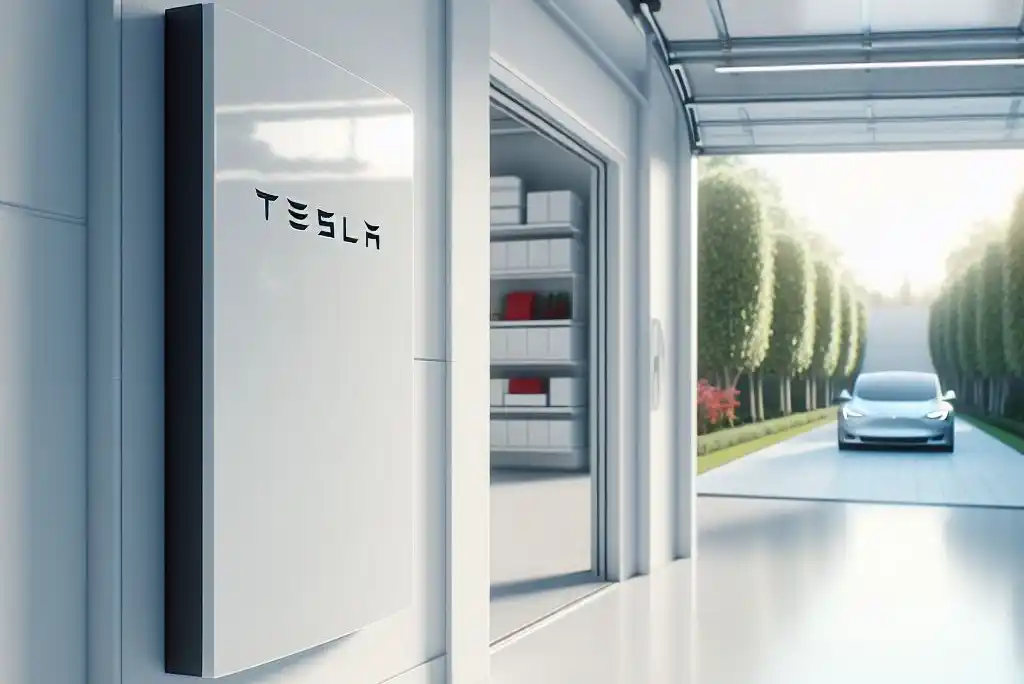
In certain cases, your home solar panels can continue functioning flawlessly while paired Powerwall units start exhibiting technical issues on their own. Common symptoms pointing to potential Powerwall-specific problems include:
- Battery charge level depleting faster than expected without related solar alerts.
- Reduced energy supply during a grid outage emergency.
- Physical damage is visible or unusual noises coming from the wall-mounted cabinet.
To troubleshoot Powerwall problems separately from the overall solar system:
- Review your Powerwall manual and supporting owner documentation for step-by-step troubleshooting instructions tailored to your installed hardware version and any optional system expansions.
- Check the gateway administering Powerwall operations hasn’t lost network connectivity preventing proper charge/discharge regulation based on home energy usage.
- Watch instructional Powerwall troubleshooting videos from Tesla for extra visual guidance diagnosing issues audibly or physically apparent at the cabinet.
- Submit a support ticket to Tesla Energy Support documenting observed Powerwall symptoms requiring further technical assessment by solar specialists.
Charging abnormalities, premature battery life degradation, physical damage, or unusual noises often mean component repairs or replacements necessary by certified technicians only for sustained optimal operations.
Safety: Powerwall Emergency Shutdown When Solar Panels Operate Normally
If you ever observe your Powerwall smoking, on fire internally, making high-pitched or clicking sounds, or showing signs of severe physical cabinet damage – consider the equipment hazardous and unstable.
It’s essential everyone immediately evacuates their home and contacts the fire department for emergency response before notifying Tesla about the urgent equipment failure.
Never personally attempt shutting the main power off or directly interacting with a malfunctioning high-voltage DC battery storage system without proper qualifications and protection. Instead, provide first responders with critical safety details like Powerwall model specifics, installation location/access points, and noting any visible sparks or smells helpful for securing the scene.
Warning emergency crews charged batteries can re-ignite even after appearing extinguished allows proper recovery precautions and cleanup. Prioritize safety first when catastrophic Powerwall failures occur and let Tesla coordinate repairs remotely accessing system logs.
Tesla Solar Panel Emergency Shutdown Procedures
While rare, solar panel malfunctions also pose some unique potential safety risks worth understanding how to properly address by both homeowners and emergency response personnel if encountered.
Isolating Problems
Solar panel wiring and connections conduct high DC voltage from panels to inverters when exposed to sunlight. Severing or disrupting these active lines accidentally is extremely dangerous and even deadly without proper safeguards and handling procedures.
If solar panel damage occurs from weather, falling debris, or other causes – don’t approach closely or touch affected equipment. Instead, immediately shut down the solar power source at disconnect switches to allow safe repairs arranging technicians afterward.
Firefighter Guidance
Photovoltaic solar panels installed on building rooftops complicate emergency response efforts if interior electrical fires occur in attached structures. Accessing roof-mounted panels during an active emergency introduces significant dangers to personnel cutting ventilation holes or conducting search operations nearby.
Fire chiefs must guide crews to isolate all system wiring from ground-based disconnect switches first before proceeding with standard venting protocols on a solar-equipped roof. marking all exterior panel conduit also ensures visibility limits accidental contact exposure when navigating the flashing hazard zone. Coordination with installing solar contractors speeds securing these specialized electrical threats safely and efficiently during stressful emergency scenes.
Adhering to important rooftop solar safety principles better protects both victims inside and emergency crews working urgently overhead during electrical fires in buildings with installed panels. Prior planning and awareness literally can make the difference between life and death ensuring proper response actions supported by all local officials and jurisdictions.
How to Report Solar Panel Emergency or First Responder Issue
Discovering your home’s rooftop solar panels damaged, smoking, or posing any other emergency threat should prompt an urgent 911 response before contacting Tesla Energy Support directly.
Focus first on safely evacuating occupants and contacting emergency crews trained to isolate hazardous electrical situations based on local protocols.
Once emergency teams secure the equipment and eliminate immediate risks (fire, electrocution, physical debris shedding, etc), thoroughly document incident specifics including photos and system models involved for Tesla engineering analysis afterward.
Expect to provide:
- Exact solar panel model numbers
- Equipment serial numbers
- Detailing any audible sounds or visible damage observed before shutting main systems down.
- Photos clearly show the scope and physical location of affected components.
Tesla Energy Support relies on owner details to escalate severe solar panel risks to senior engineering teams for further investigation remotely. Precise problem indicators help identify probable root causes and recommend permanent mitigation steps before reactivating equipment. This improves long-term safety and performance getting systems correctly repaired.
So don’t hesitate to reach out to Tesla with critical emergency reports that require internal safety reviews beyond standard technical troubleshooting procedures. Documenting issues meticulously ensures the proper escalated response urging equipment inspections or replacements as warranted based on circumstances revealed.
Tesla Solar Panel Troubleshooting FAQs
Having a solar panel or Powerwall problem but aren’t sure where to start or who to contact? Review some commonly asked troubleshooting questions for helpful answers:
How much does Tesla charge for solar panel troubleshooting or repair service calls?
Tesla provides free troubleshooting assistance by phone and through remote portal messaging with qualified solar support staff. Most common errors can be diagnosed digitally without needing home service visits.
For hardware or wiring replacement/repairs requiring technician dispatches, Tesla offers service plans starting under $10 monthly to fully cover labor/parts costs. Extra fees apply for non-warranty damage or after initial installation guarantees expire.
What solar panel and Powerwall problems can I troubleshoot myself versus needing Tesla technician assistance?
As a solar system owner, getting familiar with basic at-home troubleshooting empowers you to self-diagnose and resolve many common problems without waiting for service calls. Issues you can likely handle safely on your own include:
- App connectivity losses or missing production data needing router, gateway, or mobile app reboots.
- Physical debris buildup like leaves or snow needs removal to restore solar absorption.
- Minor alert notifications just require standard power cycling restart steps.
- General questions about system operating modes and household energy flow priorities.
However, some solar panel and Powerwall conditions warrant leaving entirely to certified Tesla Energy technicians when discovered. Scenarios to avoid interacting directly with your system over safety concerns include:
- Visible smoking, arcing electrical discharge or sparks from cables/hardware.
- Major cabinet damage, punctures, or severe weather-related destruction.
- Detection of pest infestations or nesting within critical system components.
- Repeated critical hardware failure alerts related to the inverter or gateway.
- Powerwall making abnormal noises or showing external damage.
Essentially, issues posing electrocution, fire ignition, or falling equipment risks should only be approached and addressed by qualified solar professionals with proper protective equipment.
Why is my Powerwall beeping and what should I do?
Frequent beeping or alarming emanating directly from your Powerwall system likely signals overheating conditions or critically low reserves running off-grid. But loud noises can also occasionally result from routine cooling fan cycling.
As a precaution, follow appliance-like troubleshooting by cutting the main circuit breaker and powering the Powerwall offline until alarms stop. This allows safely investigating the cause and contacting Tesla support before restoration.
If alerting continues despite a power disconnection, evacuate your home as hazardous electrical failures may be occurring internally. Don’t re-engage equipment without Tesla diagnostic guidance.
Why won’t my solar panels turn on first thing in the morning?
Unlike instant lightbulb illumination, photovoltaic panels require sufficient solar irradiance before electrical output activates. So even on sunny mornings, it takes 15-30 minutes for ambient brightness hitting panels to exceed the minimum threshold triggering measurable power generation.
Verify time-of-day aligns with seasonal sunrise levels penetrating overnight darkness rather than just lighter sky hues visible. Dashboards should show production values increasing within an hour once the position and environmental conditions allow the photoelectric reaction.
My Tesla solar panel app shows offline despite full WiFi bars.
Don’t assume robust household wireless coverage alone maintains 24/7 real-time solar analytics and control through Tesla’s cloud-based platform. Network gear and panel controller connectivity depend on additional factors like web access, servers performing properly, and gateway reboot states after any service interruptions.
Start basic home troubleshooting by cycling modem/router power off/on before resetting solar hardware breakers ensuring all underlying systems properly reinitialize connectivity. If unsure about electrical procedures or reboot orders, contact Tesla Support for remote walkthroughs before assuming hardware replacements are needed. Patience is key as some unique outage combinations can take hours of self-correcting as external systems come online.
Summary of Troubleshooting Tesla Solar Panel Problems
Having solar panel issues can be stressful but often basic troubleshooting corrects common problems quickly. To recap key things to try and important safety considerations we covered:
- Monitor Tesla app notifications for insightful alerts guiding do-it-yourself fixes before calling technicians.
- Visually inspect all system wiring and components to identify damage risks needing isolation.
- Carefully power cycle gateway/inverter hardware forcing reboot attempts.
- Clean debris like snow, leaves, and bird droppings off panels limiting output.
- For safety stay clear of visibly damaged equipment with ignition or electrocution risks.
- Prioritize injury prevention and contact emergency crews for hazardous smoking/arcing panel damage before Tesla.
- Provide detailed observations and photo evidence to Tesla for warranty damage assessments.
- Consider adding comprehensive equipment protection plans for affordable long-term service.
We hope these solar troubleshooting tips help drop your stress levels and offer a go-to reference for getting problems resolved efficiently. Remember even complex-looking issues often stem from preventable causes like bad firmware requiring simple reboots.
Have your own nightmare Tesla solar story or lessons learned overcoming setup challenges to share? Comment below!


